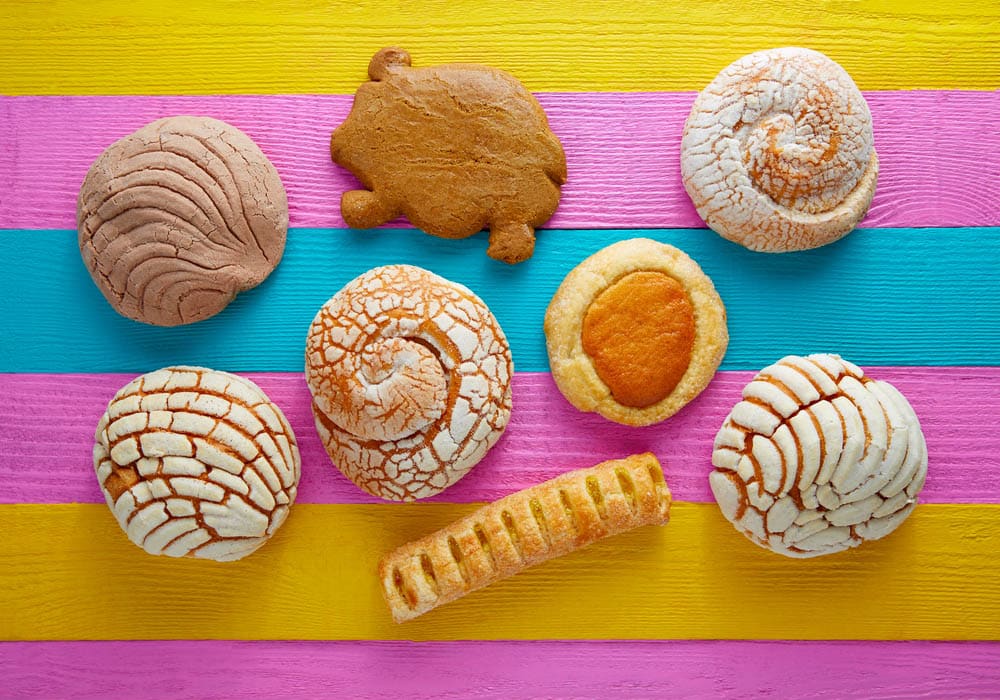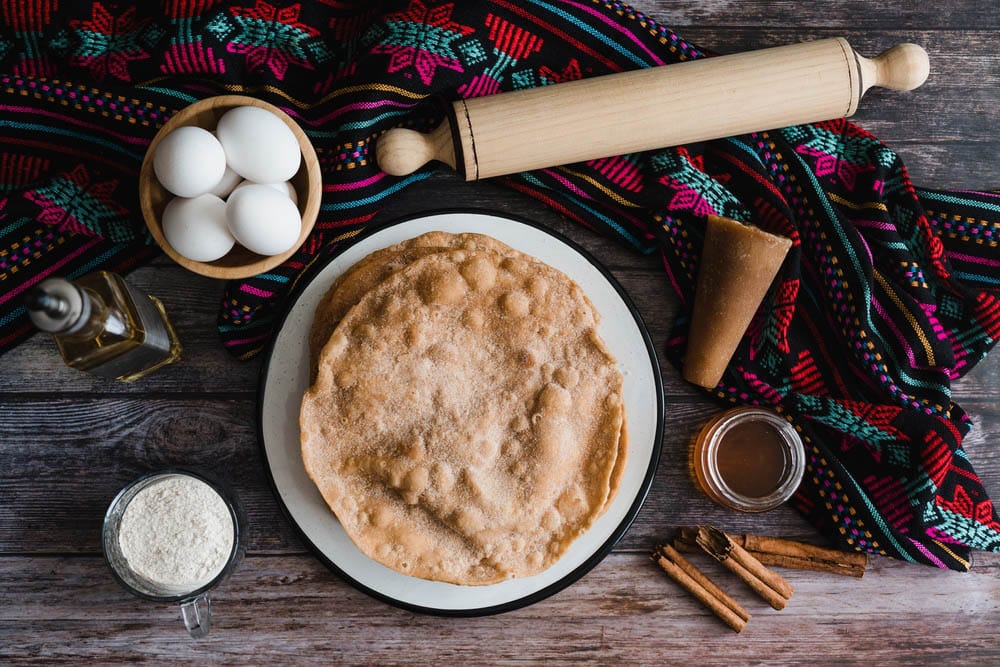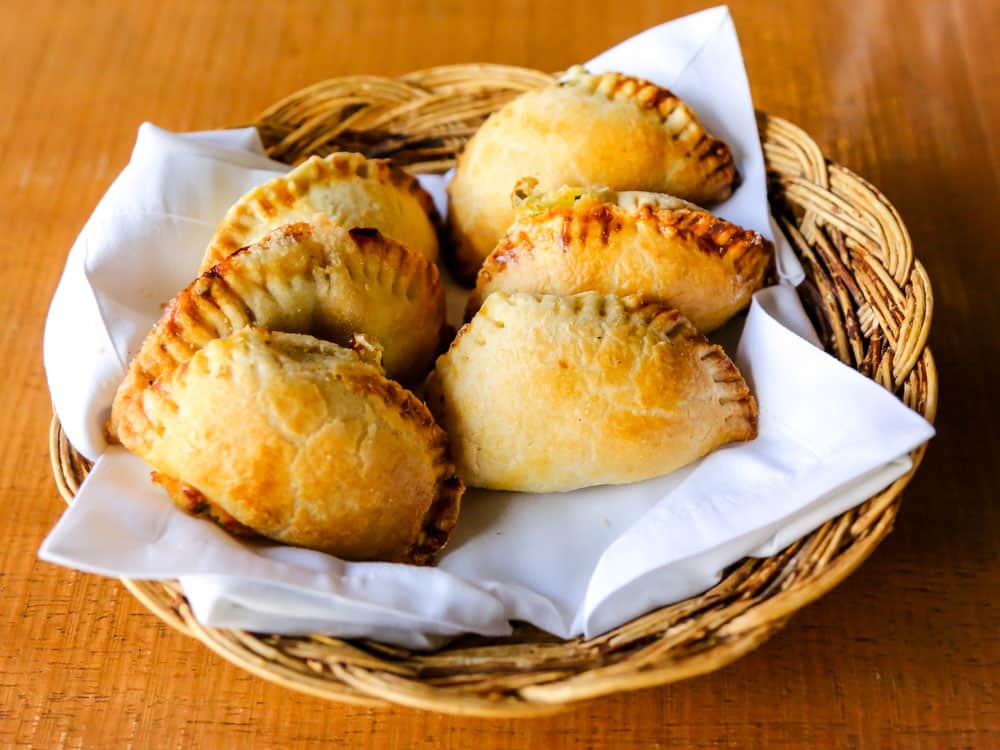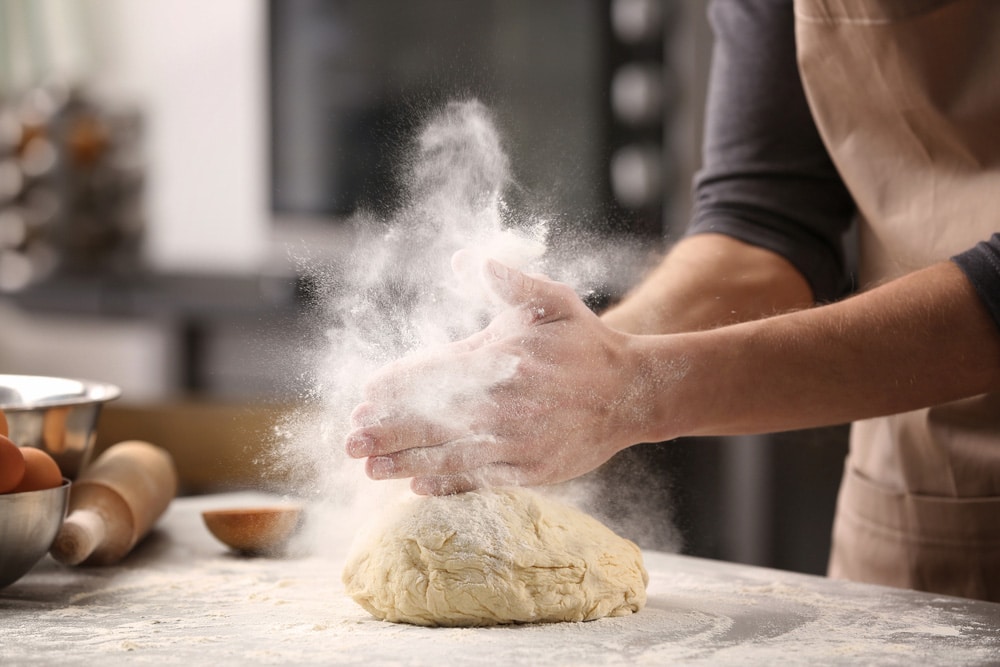
Pastry making is considered a difficult facet of cooking, but when correctly done, the work becomes easy. Delicious pies, biscuits, and desserts can all be made from a good pastry. What’s more, pastry keeps well for several days in the refrigerator.
When it comes down to Mexican pan dulce, or sweet bread, conchas are a sweet Mexican bread and the country’s favorite sweet bread. The concha has two parts: a sweetened bread roll and a topping traditionally flavored with vanilla or chocolate.
Conchas are unique to Mexican culture and are available at every Mexican panadería. Other popular kinds of pastries can include cuernitos, sweet empanadas, and puerquitos or marranitos.
Nobody would be satisfied with one of these sweet treats if it had a soft, mushy texture. It’s the dry, biscuity texture that makes so many of Mexico’s pastries so delicious.
In fact, Mexican chefs actually go to great lengths to only select certain ingredients to ensure a dry textured pastry. They even keep their kitchens dry and free of humidity to ensure their pastries have a dry texture.
Why some Mexican pastries are so dry
It’s in the ingredients
What ingredients are used in the pastry’s dough to ensure a dry texture? Most bakers strive for their pastries to be light, buttery, and flaky. So all pastry starts with a combination of ingredients. These are flour, salt, butter or some other fat, and water.
The differences in textures of many pastries have quite a bit to do with the kind of fat used. Fats contribute to the flakiness of the pastry. Pure fats, such as lard and shortening, produce drier, flakier pastry.
Bakers have to often decide between flavor or texture with pastry, much of which relies on the fat in the recipe.
- Mixing, baking techniques and room temperature
The mixing and baking techniques as well as room temperature can also impact the way the pastry turns out. Mexican puff pastry is a kind of pastry that is simply made with flour, water, and fat and used in sweet and savory treats in Mexico.
Mexican bakeries strive for a light, flaky, dry pastry that is used to make a host of different foods such as churros and empanadas.
- The right ratio of ingredients
Mexican bakers deliberately follow their pastry recipes to the ‘t’ to ensure the pastry is dry. No matter what kind of dough they make, they always stick to the tried and tested recipe.
They know that if they want their traditional dry pastry, they have to have the right ratio of ingredients, so it bakes to perfection.
It’s all about storage
Mexicans and visitors to the country love their pastries for breakfast, lunch, and dinner. When the pastry is baked, it must be stored in an airtight container. The container too should be kept in a cool, dark spot to keep the pastry crisp and dry.
If kept in a hot, light area, the pastries can become soft and even soggy. The pastries can be kept for about 3 or 4 days at room temperature. If you’ve made dough, it can stay in the fridge for 24 hours and in the freezer for up to 3 months.
Some pastries are baked to be dry
Mexican cuisine is vast and varied, and the pastries have different textures. Sopapillas are fried with a crispy, dry texture. Some of these dry pastries are therefore enjoyed with a chocolate sauce or even a hot chocolate drink.
Another example is Orejas. It’s a crispy, dry French pastry, but it is immensely popular in Mexico. You can buy them at every bakery. Then there is a banderilla. It’s a long, slender kind of bread coated with sugar.
It has several crispy, dry, flaky layers with a shiny glazed topping. These kinds of pastries are known for their signature dry, flaky texture and are ideal for dipping into a hot chocolate drink. Pan dulce falls into different groups based on the dough that is used.
There are those that are more cake-like in texture, and there is also the more drier, crumbly textured kind that is similar to a shortcrust pie pastry. No matter the dough, they are all delicious.
The dough-making process has gone wrong
Mexican bakers know that things can go wrong with their recipes so that the pastries turn out deflated, and are soggy. The dough doesn’t hold its shape and either has too little flour or too much milk or water. This is when they know their recipes have gone wrong.
They fear the pastries won’t be traditionally dry. They simply make a half batch of dough without the eggs with butter, salt, and flour and add it to get the right consistency.
Also, removing pastry from the oven too early is just another reason why your pastries will be flat and soggy. Even if they do rise, they will deflate as they cool because there is too much hot, moist air inside.
Baked treats never looked this good
Many Mexican pastries are meant to be dry and flaky. Mexicans enjoy them like that as it’s their tradition to dip them in their hot beverages to moisten and soften them. Mexican sweets are varied, and even the dry ones are good and look appealing.
They have some cinnamon, caramel, and vanilla as additions to ensure the crisp dry pastries just melt in your mouth, giving off delightful flavors. Yes, there’s a reason why Mexican pastries are dry. It’s a deliberate choice Mexicans make.
The bakers fully agree that not everyone will agree, because everyone is different, and that’s ok, but for Mexicans, the dry pastries are everyone’s favorite.



